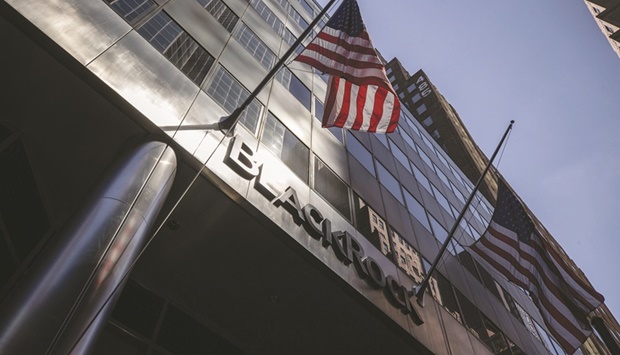Negative annual returns in US Treasuries are rare, and when they do pop up, for a generation they’ve always been followed by a rebound. BlackRock Inc and Vanguard Group Inc see that relationship in peril this year.
The Bloomberg US Treasury Index has returned minus 2.5% in 2021, poised for the first yearly slump since 2013. In records stretching back to 1974, it’s never fallen two years in a row.
With yields still so low by historical standards and the Federal Reserve poised to jack up interest rates to battle inflation, some investors are bracing for more losses this year.
“A repeat of 2021 is a reasonable expectation for Treasury market returns in 2022,” said Jean Boivin, head of the BlackRock Investment Institute, the asset manager’s in-house think-tank. “If inflation eases slowly from where it is at the moment, there is the risk of more downside performance in Treasuries this year.”
That would create a headwind for the popular 60/40 strategy, which distributes portfolios into both stocks and bonds, leaving investors relying on equities and riskier debt to generate positive returns.
Although valuations for both stocks and high-yield credit are expensive, BlackRock expects 2022 will deliver global stock gains and bond losses for a second straight year, the first such outcome based on the firm’s data going back to 1977.
“Our base case for 2022 is that growth and risk assets hold up and the market gets comfortable with the idea that the Fed tightens after the first quarter,” said Brian Quigley, senior portfolio manager at Vanguard Group. “That is moderately bearish for Treasuries.” Quigley sees yields on 10-year notes rising toward 2%, from 1.5% currently.
That yield forecast rhymes with the average estimate in a Bloomberg survey of strategists for late 2022. If that comes to pass, it will ding Treasuries returns. And, as seen this year, the low levels of fixed Treasury coupons are not only negative in inflation-adjusted terms, they can’t offset much of a price decline.
While the Bloomberg Treasury index has generated a positive coupon of 1.5% so far this year, that modest income stream has been drained by a price return of minus 4% due to the rise in overall yields since January.
The Bloomberg Treasury index has posted only four annual declines before 2021: in 1994, 1999, 2009 and 2013. It always rallied the following year, with gains ranging between 5.1% and 18%. This time, a slice of unwelcome history beckons.
“There is a first time for anything, and the chances of a second straight negative year for Treasuries is higher given the limited room for yields falling,” said George Goncalves, head of US macro strategy at MUFG.
Concern over shutdowns hitting the economy early next year has extended a notable decline in benchmark Treasury yields since they peaked in late November. Haven demand may contain yields into January, leaving the market vulnerable should economic data show resilience and the Fed remains intent on raising rates soon.
The first week of January is replete with economic data, topped by the employment report for December. Economists expect 400,000 new jobs, up from the prior month’s tally of 210,000. Wage gains over the prior 12 months are seen easing to 4.2% from a 4.8% pace for the year ending in November. The bond market will also scrutinise the minutes from the Fed’s policy gathering last month for a sense of how the committee leans toward the timing of an expected first rate hike in 2022.
“An important point from recent Fed communications is that the reaction function next year may be more hawkish than expected,” said Lou Crandall, chief economist at Wrightson ICAP. “The Fed has indicated it can’t ignore inflation,” and that could well see the central bank look at raising rates in March, although such a decision will rest on how the economy fares with the latest Covid wave, added Crandall.
The prospect of rate hikes starting next year has naturally pushed up policy-sensitive short-dated yields. In contrast, both the 10-year note and 30-year bond yields remain below their 2021 peaks, driving a pronounced flattening in the Treasury yield curve.
Once the Fed actually starts raising its overnight rate, the flattening trend will remain dominant, but the curve should also shift upwards. “Once the Fed tightens, the curve will bearishly flatten,” said Vanguard’s Quigley.
Another aspect of the Fed’s tightening cycle during 2022 that may well push up long-dated Treasury yields and impair returns is how the central bank manages its vast balance sheet, which has more than doubled in size to nearly $9tn during the pandemic.

BlackRock headquarters in New York. Negative annual returns in US Treasuries are rare, and when they do pop up, for a generation they’ve always been followed by a rebound. BlackRock and Vanguard Group see that relationship in peril this year.
